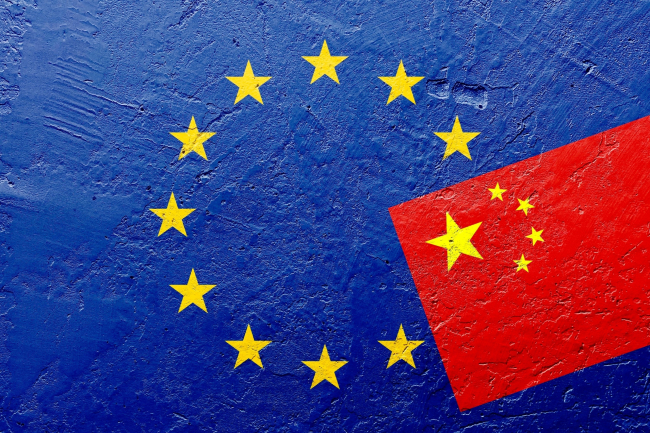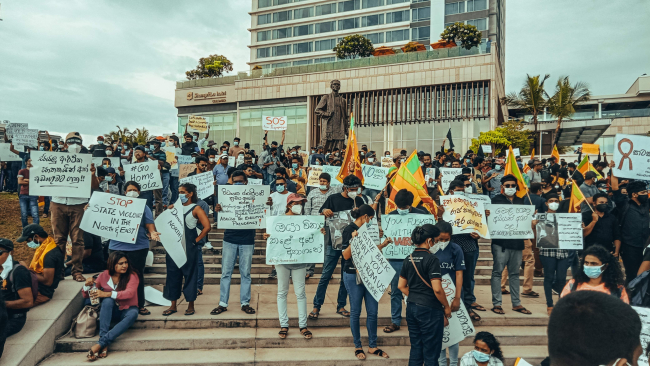The regional economic order: Four scenarios
What will the economic order in the Indo-Pacific region look like twenty years from now? What are the major trends shaping it, and how are they likely to evolve in the near future?

These are the questions that will be addressed in this brief note. The analysis will begin by identifying the major trends that have recently emerged in the Indo-Pacific region and are likely to impact the economic order in the region going forward. Additionally, key potential game-changing events will be highlighted, which may push the region in one direction or another. The second section of the paper will describe four scenarios resulting from the combination of the observed pre-existing trends and trigger events. The scenarios are obviously not meant to provide a realistic forecast of the future. Instead, they aim to illustrate some of the forces that could shape the medium and long-term outlooks for the region’s economy.
Key economic trends in the Indo-Pacific
The first trend pertains to the observed shift in the world economic centre of gravity to the Indo-Pacific region with security implications going far beyond the immediate neighbourhood. Not only are the major economies in the region—China, India and Japan—dependent on Indo-Pacific sea routes for their trade and energy supply, but the Indo-Pacific has emerged as the hub of global trade and energy supply. While 80 percent of global trade by volume and 70 percent by value is transported by sea, of that volume, 60 percent of maritime trade passes through the Indo-Pacific. The economic importance of the region makes it of utmost strategic value. Security in the Indo-Pacific has become a prerequisite for the prosperity of world trade, as the two most important maritime choke points (Bal al Mandeb and the Malacca Strait) are located on either side of the region. In this context, all countries in the region and beyond have a stake in keeping an open, free and peaceful Indo-pacific anchored on a rules-based order.
The Indo-Pacific has also become home to two mega-trade arrangements, the Comprehensive and Progressive Agreement for Trans-Pacific Partnership (CPTPP), which encompasses 11 countries on both sides of the Pacific, and the Regional Comprehensive Economic Partnership (RCEP), which covers the 10 ASEAN member-states and five dialogue partners (China, Japan, South Korea, Australia and New Zealand). None of these arrangements includes the United States.
The second major trend relates to the rise of the Chinese economy and, as a corollary, China’s strategy of economic coercion. This development has many implications in terms of regional stability, and room for manoeuvre for the countries in the region. As China is now the number one trade and investment partner for many countries in the region, there is a non-negligible risk that overdependence on China will make these countries highly susceptible and vulnerable to economic coercion. This has been exemplified by Beijing’s campaign against Korean economic interests in 2017 following the deployment of the Terminal High-Altitude Area Defense (THAAD), and by China’s pressure on Australia in 2020 in response to Canberra’s request to investigate the origins of the COVID-19 pandemic. The major challenges will be how to accommodate China while simultaneously resisting Chinese pressures and learning how to peacefully co-exist.
A third trend relates to the intensification of the (Sino-US) technological rivalry, which plays out against the backdrop of the Indo-Pacific region. The Sino-US rivalry is nothing new, but there has been a clear escalation lately, with the tech-race turning into a broader race for supremacy, not only in the region but in the world as a whole. In the wake of the Sino-American trade war launched by former US president Donald Trump, the decoupling of the two countries’ technology sectors has been gaining ground. This US federal government has been pushing some of its multinational corporations to move supply chains away from China or banning their exports of key components and products to China. Thus far, the change in Administration has not affected this trend and Washington still expects allied governments, such as Japan and Korea, to follow suit.
Scenarios for the economic order in the Indo-Pacific by 2040
Several developments may prove disruptive and tilt the situation in the region in one direction or another. These trigger events may relate in particular to China and to the US-China relationship, which is key to the future and stability of the Indo-Pacific region. Firstly, China’s economic trajectory gets disrupted by a natural disaster, a health crisis, or souring domestic political tensions. For instance, too heavy-handed authoritarianism in Beijing may lead to internal frictions within the Chinese Communist Party and to domestic instability. Alternatively, with social issues piling up, popular discontent may grow and eventually lead to a general uprising upending the regime. All these events would deeply alter China’s economic trajectory.
Secondly, there may be a sharp deterioration in the US-China bilateral relationship. A violent clash between the United States and China may be the result of the trade and technological “war”, leading the countries in the region to no longer be in a position to balance or hedge, and to have to take sides. Additionally, the way “other” Asian powers such as Japan, India, or even ASEAN behave may help tilt the situation in one direction or the other.
Four scenarios can be envisaged for the region out to 2040. These scenarios hinge on the evolution of the aforementioned trends and trigger factors (and in particular the US-China relation and/or the domestic Chinese economy).
Scenario 1: More of the same
This scenario reflects the continuation of the current economic situation with no major change in one direction or another. The Sino-US rivalry persists leading to a highly instable economic situation, but without an open clash. Economic tensions persist and economic alignments shift depending on the issue at stake. As a result, phases of economic tension and sanctions, with retaliation and counter-sanctions episodes are followed by quieter periods. In this context of persistent economic instability, ASEAN may end up divided, with some countries (mostly those which are economically dependent on China, such as Laos, Cambodia, and perhaps Thailand) siding with China at some point and with the US, Japan or Korea at another point in time. It is worth noting that the potentially negative side-effects of the US trade war against China may drive some East Asian economies away from the United States.
Scenario 2: Bifurcated Indo-Pacific
This scenario corresponds to a bipolar Indo-Pacific, with a US-led camp and a China-centred one. National security is at the centre of both Chinese and US concern and of their economic and trade policy, leading to a pervasive weaponisation of economic links. The Indo-Pacific emerges as a battleground between the two superpowers, Sino-US rivalry deepens and extends beyond technology, and the rift between the two powers widens inexorably. This extreme tension results in bifurcation in many areas (technology, economic order, trade arrangements etc.). With restrictions on tech flows between the United States (as well as some of its allies) and China, separate manufacturing ecosystems emerge, and full decoupling prevails. However, the two camps also compete in many other areas such as development assistance and infrastructure development and financing.
In this scenario, two rival trading arrangements also co-exist. The United States re-joins the CPTPP which emerges as the economic rule-setting mechanism for some countries in the region (including US allies, like Japan, Korea, Australia, and possibly India), while others favour closer economic integration with China, which actively pushes for a revival of the Belt and Road Initiative (BRI). In this context, RCEP collapses as countries choose either the China-led order articulated around the BRI or the now US-led CPTPP.
The exact contour of these two camps remains an open question (and may not be definitively set), but Southeast Asia is likely to be a hotbed for the Sino-US strategic rivalry. Next to countries such as Laos and Cambodia, China is also wooing several US allies, such as Thailand and the Philippines, using economic statecraft initiatives like the BRI.
Over a longer time-horizon, the stability of this scenario will likely come into question and the emergence of a China-dominated Indo-Pacific is a distinct possibility if the United States keeps losing ground in terms of economic achievements.
Scenario 3: China’s economic demise
In this scenario, the United States remains the predominant power while China runs into major domestic economic trouble as a result of demographic pressures (rapid aging, political tensions, internal frictions etc.). With China collapsing economically, the United States and its allies are in a perfect position to push deeper regional integration in line with their norms and values. This may result in the enlargement of the CPTPP, giving rise to a rules-based economic order encompassing most of the region.
This scenario is more likely to prevail in the case of an open economic crisis in China. In such a context, Chinese leaders will seek to get out of the economic crisis by reconnecting to the rest of the region and taking advantage of the external pressure for reform coming from the country’s partners.
Scenario 4: Happy ending
According to a widely shared consensus, the Indo-Pacific region is too large for any one single country to dominate it without triggering destabilising frictions. As a result, the only way for the region to thrive economically is through cooperation. Although there may be some degree of competition between the two major players as well as between several others such as Japan and China, China and India, or even Japan and Korea, there is no fierce (nor destabilising) rivalry. Economic relations in the region are appeased and move from a logic of rivalry and zero-sum economic games to a logic of cooperation and genuine win-win economic interactions. Deeper economic interdependence within the region is peacefully managed and serves as a basis for prosperity for all. In terms of institutional arrangements, the East Asia Summit develops into a key economic forum and is eventually turned into an Indo-Pacific Summit involving all the countries of the region, with an Indo Pacific-wide trade agreement as a major goal. RCEP emerges as the natural basis on which to build. In this context, China is an active player and willingly participates in an enlarged RCEP-based trading arrangement. In such a cooperative scenario, there may even be a convergence of views on how to approach Africa, with the Asia-Africa Growth Corridor likely to be actively endorsed and upheld by many countries in the region beyond Japan and India.
*******
This paper was originally published as part of the ANU National Security College Future Insights Series, accessible here. The Series is designed to help policymakers develop and test futures scenarios, conduct horizon scanning, and integrate futures analysis into their work. The papers are designed to present provocative conversation-starters and arguable propositions, not definitive trend lists, or predictions about future circumstances. Every paper in the series is informed by consultation, and reviewed by experts.
It is published with support from the Japanese Embassy in Australia. The ANU National Security College is independent in its activities, research and editorial judgment and does not take institutional positions on policy issues. Accordingly, the author is solely responsible for the views expressed in this publication, which should not be taken as reflecting the views of any government or organisation.

Available in:
Regions and themes
Share
Related centers and programs
Discover our other research centers and programsFind out more
Discover all our analyses
Opening up the G7 to South Korea to Address Contemporary Global Challenges
The G7’s global influence has diminished as powers like China reshape international governance through initiatives such as BRICS and the Shanghai Cooperation Organisation (SCO). With the G7 now representing just 10 per cent of the world’s population and 28 per cent of global GDP, its relevance is increasingly questioned.
Expanding SPDMM as a pivotal institution in the Pacific – A French perspective
The South Pacific Defence Ministers’ Meeting (SPDMM) is the only forum that brings together defense ministers from the wider South Pacific — including Chile, which is hosting it for the first time. This heterogeneous group of countries with varying resources, capacities, and interests — Australia, Chile, Fiji, France, New Zealand, Papua New Guinea (PNG), and Tonga — are united by their shared determination to strengthen cooperation on maritime security and humanitarian assistance and disaster relief (HADR) activities.
EU’s Derisking From China: A Daunting Task
With economic security as a major concern, the EU has recently turned to “derisking” from China. The EU strategy entails reducing critical dependencies and vulnerabilities, including in EU supply chains, and diversifying where necessary, while recognizing the importance and need to maintain open channels of communication.
Sri Lanka’s NPP Government. From System Change to Structural Compliance
In September 2024, a relative outsider to Sri Lanka’s two-party-dominated political system, Anura Kumara Dissanayake, won the presidential elections. The anti-establishment, populist movement he represented, the National People’s Power (NPP), went on to receive an overwhelming mandate in the November 2024 general elections, winning 159 seats in a 225-member parliament.










